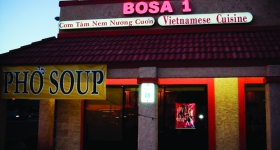If I were to tell you that the agreement we had reached a long time ago was based on gifts and bribes, you would probably question the whole transaction. You would most likely want to stop engaging in the practice. You’d probably withhold trust of me as an honest broker, and hopefully, you would do well to be more skeptical about any future claims from the likes of someone like me.
It doesn’t matter what kind of transaction it is. It could be as innocuous as a fruit basket, or maybe a refrigerator, or a musical instrument. But suppose that the transaction involves something a bit more abstract: in this case, lessons about our shared cultural heritage, where we came from, and the kinds of rituals that you and I have come to know as part of our lives for generations. Let’s broaden the scope of this: What if the transaction in question was not simply a one-time deal, but a tacitly agreed-upon practice, handed down from one generation to the next and dutifully replicated hundreds, maybe thousands, of times for the last 30 years? Again, what would it mean if we were to find out that the foundation of these myriad transactions were the direct result of gifts and bribes that took place long before you and I responsibly and in good faith went about executing these agreements?
In The Day the Dancers Stayed, I traced the genealogy of a US-based performance genre called the Pilipino Cultural Night (PCN), a show that continues to be performed by thousands of college (and increasingly high school) students of Philippine heritage. The logistical demands on the students are immense: hundreds of hours of coordination, venue rental, equipment assembly, rehearsal, and, in some notorious cases, student performers going on academic probation due to their commitment to the show.
Starting with my own experiences as an audience member and eventually as a show planner and performer, I traced the origin of these carefully choreographed movements, at first to a famed Philippine dance theater troupe that garnered critical international acclaim in the late 1950s, but ultimately, to the period when sovereignty was actively being debated between Manila and Washington, DC, during the American colonial period. What I had not expected to find in the creation of the original performance repertoire in the Philippines in the 1930s was the consistent use of bribes to elicit specific behavior from locals and natives who were, in many instances, reluctant to perform their dances and songs for Manila-based physical education teachers. The teachers provided incentives in the form of food, tobacco, and other goods; none of this was disguised or edited out of published accounts. In fact, several writers made clear that, for whatever reason, their task of “recovering” such dances was in danger due to local reticence and non-participation.
Reynaldo Alejandro has long been considered a pioneer in Philippine dance in the United States, having founded and led his troupe for several years while based in New York City, as well as authoring 40 books over 36 years. In his first book, Sayaw Silangan: The Dance of the Philippines, published in 1972, Alejandro wrote about the work of Manila-based physical education teachers who scoured remote Philippine provinces in search of examples of local folkloric dances. He wrote, “At the risk of their own lives, the team journeyed through perilous territories seeking living sources of material and information. On some occasions they had to gain the graces of their informants by bartering food, clothing, wine, or tobacco” (Alejandro, 47). In 1987, members of the famed Bayanihan Philippine Dance Company wrote about their early experiences in the 1950s, in building on the work of the physical educators from the 1930s. One spoke about research teams fanning out into the countryside: “[W]e had to climb mountains, cross treacherous water, edge our way into the remote hinterlands to get to our sources. And when we did get there, we had to cajole, beg, or bribe to get the folk to perform their dances for us” (Lardizabal, 207). An artistic director for the same troupe recalled recalled a “shy burst of giggles” as Manila educators saw members of a tribe huddled together on a hill across a gorge from the open field. Too bashful to meet their visitors face to face, the locals chose to have a look at the strangers from a distance, who approached them with gifts of beads and scarves.
The accounts of these early research trips undertaken in the 1930s and 1950s were intriguingly consistent -- emphasizing heroic efforts by intrepid urban scholars (Manileños) braving harsh conditions in the “hinterlands”: whether forbidding jungles, or bucolic and idyllic provinces, always the antithesis to the metropolitan center. That part of the story shouldn’t come as a surprise. One of the major functions of nationalisms, from various locales and times, has been to mine disparate pasts and myriad ethnolinguistic/regional identifications so as to construct some kind of easily managed and unified whole: complete with uniforms, flags, songs, and choreographed movement. The kind of work undertaken by the Manileño administrators anticipated the change in status in the Philippines -- from a US colony, to a sovereign nation. The questions on the minds of these urban agents included: What is Philippine dance? How should a “free” people move, and to what songs? Some would say they “discovered” long-lost folkloric dances and songs. They did more than that: They invented the national repertoire. It’s a story about the triumph of the knowing civic “center” that has the powerful nominal burden of making sense out of her untamed and outlying regions, to make national sense out of all that unruly provincial chaos.
The problem with a bribe is intuitive enough. We understand it as a transaction that is determined by deceit and fraud. The earliest use of the term referenced something quite sinister, as in an official or judge extorting or exacting some amount from a helpless person. But the present-day understanding of the term allows for “consideration voluntarily offered to corrupt a person and induce him to act in the interest of the giver” (OED). Isn’t that what happened in the encounters I pointed to above?
It’s easy to see what some of the stakes for the documentation and dissemination of cultural work would be. For PCN performers, performing the dances and songs, and donning costumes as historical figures, means accessing a mythic and usable past. They’ve become a ritual for college students. The conceit of the shows has been that folkloric knowledge is key to being able to claim an authentic Filipino identity. But, if bribery was required to create the original national repertoire, then does not everything following in its wake deserve deep skepticism? Isn’t the idea of the folkloric whole that’s envisioned in the repertoire -- that of a varied Philippine culture represented in dance and song as myriad and harmonious ethnolinguistic groups -- as much fiction as anything referring to a singular “American culture”? For generations, these Philippine performance repertoires have been edited, highlighted, accentuated, and adapted to fit the needs and desires of urban scholars and tourists as much as those of suburban co-eds. What the bribe has purchased for so many years has been a fiction that serves a cosmopolitan, apolitical, and Christian self, not those it claims to honor or remember.
Most of us, especially diasporic communities far from a “homeland,” or as so-called minorities in the United States, constantly perform all manner of rituals that remind or reconstitute a transformed sense of where and what “home” is. Even though the origins of the national performance repertoire of the Philippines were founded in actions that have been described as bribes, I don’t think it matters much to the thousands of student performers who take up the PCN every year. There’s too much invested in the convention and myth of the folkloric forms. Ultimately, PCNs don’t refer directly to the work of those researchers lionized in vanity publications tracing the development of a dance troupe’s work; they refer to other PCNs -- what another campus attempted. The historical truth of what happened in those early transactions hangs in the imagination of only a select few performers -- choreographers, show producers, and so on -- but for the most part, a serious encounter with the history of the folkloric form is useless. The myth accomplishes so much more.
* * *
Theodore S. Gonzalves is an associate professor of American Studies at the University of Hawai'i at Mānoa. He is the author of The Day the Dancers Stayed: Performing in the Filipino/American Diaspora.
You've just read a post from Across the Desk: a collaboration of Asian American journalists and scholars. See here for more in the series. Scholars and journalists interested in contributing, please email the series editor at erin[at]hyphenmagazine[dot]com.









Comments